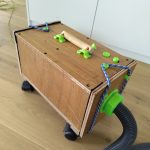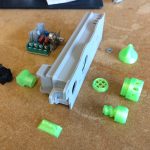Tenok challenges the idea that vacuum cleaners must be disposable. It proves that with creativity and engineering, we can extend the life of discarded products.
At FairVacuum, we believe in a world where household appliances don’t have to be disposable. Every year, millions of vacuum cleaners are discarded, often with fully functional motors, hoses, and electrical cables. Instead of allowing these valuable components to go to waste, we set out to design a universal vacuum cleaner body that could reuse parts from trashed vacuum, creating a truly sustainable alternative.
What we learned from working at repair cafés
Our journey began in 2022 when we started researching whether a universal, open-source vacuum cleaner already existed. Through our experience working in repair cafés, we observed two key insights.
1. Vacuums are thrown-away too quickly: Many vacuum cleaners are discarded even though they only have minor, easily fixable issues. Data collected from repair cafés worldwide by repairmonitor.org reveals that vacuums have a high repair rate of more than 60%. This data was further analysed by the Open Repair Alliance’s report on vacuum cleaners which highlights key reasons why vacuums fail and what the barriers for repair are. Read a full report here.
2. Vacuums have a high impact on e-waste: Vacuum cleaners are the second most common appliance brought in for repair, right after coffee machines—making them a significant contributor to e-waste. This is hardly surprising as almost every household in developed countries owns at least one vacuum cleaner. With such widespread use, it’s no surprise that vacuums contribute significantly to e-waste when they are discarded, often long before the end of their functional lifespan.
The problems surrounding vacuum cleaners are well-known and have been extensively researched by many universities and other institutions. For example, research led by UK Professor Tim Cooper at Nottingham Trent University (2015–2019) confirms these insights:
“Rather than taking proper care of vacuums, people are discarding them prematurely instead of maintaining them properly and carrying out relatively simple repairs.”
“This is a real issue, as the manufacture of vacuum cleaners accounts for the second largest production of greenhouse gases among electrical products. It’s yet another worrying example of our growing throwaway culture which is damaging to the environment and completely unsustainable. We need to do a better job of designing products which stand the test of time.”
These insights confirm that countless vacuum cleaners are discarded daily, even though their motors, hoses, and power cables remain fully functional. This led us to ask: What if we could salvage these components and reuse them in a universal vacuum cleaner body?
With this idea in mind, we began searching for existing solutions. After hours of scouring the internet, we finally discovered Tenok, an open-source vacuum cleaner designed by Tim Krahmer, a true proof of concept for what we had envisioned. This discovery provided both the inspiration and the starting point for our own journey.
What is Tim Krahmer’s Tenok vacuum cleaner?
Tim Krahmer, a post-industrial designer from northern Germany, is known for his innovative and sustainable projects, such as the KRAVOX open-source musical instrument. In 2019, he developed Tenok, an open-source DIY vacuum cleaner designed to be built from discarded vacuum cleaner motors, old bicycle tubes, office chair castors, and a wooden enclosure.
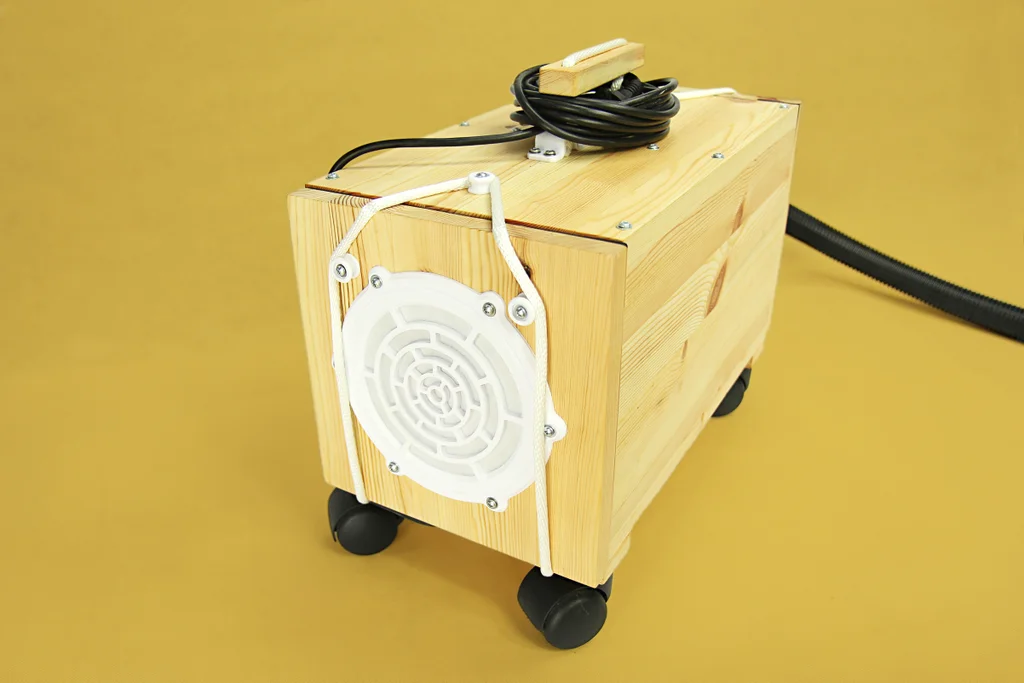
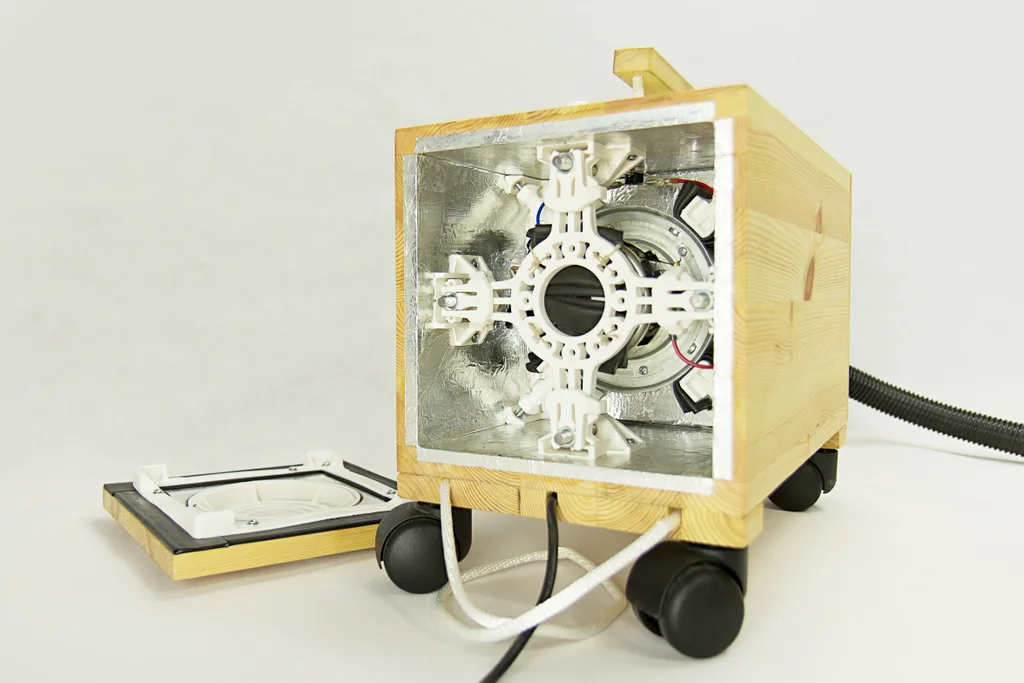
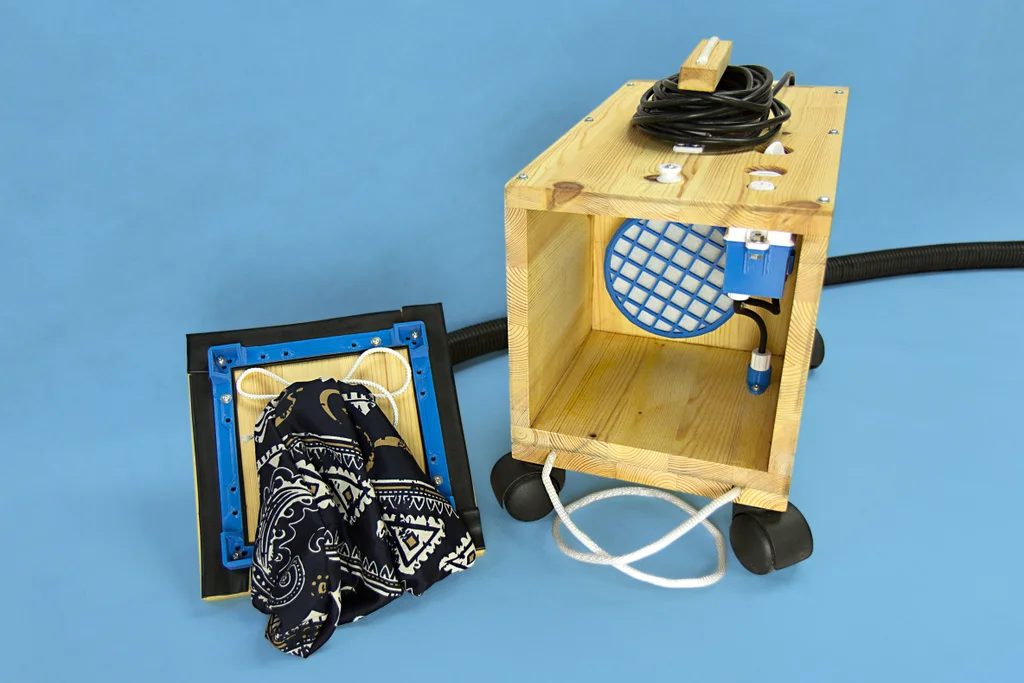
Tim’s motivation was simple
He was also troubled by the fact that many vacuum cleaners are discarded despite having numerous functional components. Through his research, he discovered that most vacuum motors are technically similar, differing only minimally in size and power ratings. However, reusing hoses across different vacuum models proved nearly impossible due to proprietary connectors designed by each manufacturer, limiting their interchangeability.
Tim realized that these challenges could be overcome by designing an adaptable vacuum cleaner, allowing components to be reused efficiently. In doing so, he saw an opportunity to transform waste into a valuable resource.
Tim set forth the following design goals
1. Built with simple tools: A vacuum cleaner that anyone—especially makers—can assemble using basic tools, without the need for expensive machinery.
2. Reuse waste as much as possible: 80% of the components come from recovered waste, including:
– Wooden panels for the body
– Motors, hoses, and power cables from discarded vacuums
– Old bicycle inner tubes for airseals and motormounts
– Wheels from discarded office chair wheels
3. Minimize new parts: Only a few parts need to be newly made or purchased
– Screws
– 3D-printed parts
– A small electronics module
4. Open-Source & Repairable: Anyone can build, repair, or modify it.
Tim’s vision was radical: a vacuum cleaner that could last a lifetime, free from manufacturer-specific spare parts or planned obsolescence. And it worked. Tenok is fully functional, proving that a vacuum cleaner can be built from discarded components. We love Tim’s Tenok vacuum cleaner is a brilliant concept that aligns perfectly with our mission at FairVacuum.
Challenges & limitations of the Tenok design
While Tenok is a fantastic DIY project, we noticed some practical limitations when we built and used one ourselves. If you are a maker that wants to build and use the vacuum in your home, we believe these are the two biggest challenges that is holding the current design back.
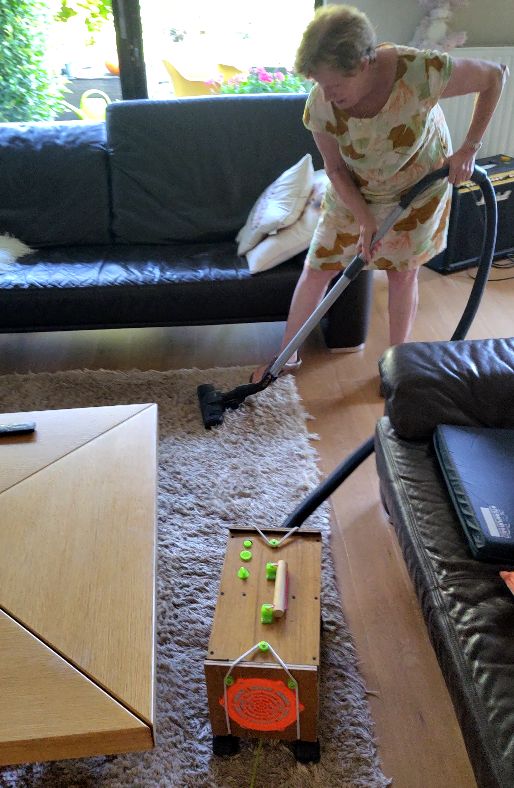
Two biggest roadblocks for DIY scaling
1. Time-intensive & complex build: Building a Tenok can take 40+ hours, making it a serious commitment. While the instructions are detailed, they can be challenging to follow. Additionally, sourcing both new and salvaged components adds another layer of difficulty, making the project less accessible for enthusiast.
2. No standard dust bag support: One of the most unconventional design choices in Tenok is its scarf-style dust collection system. While creative, it’s impractical for daily use. Most people are used to sealed, easy-to-replace dust bags, which help with cleanliness and convenience. The current system can be messy to empty, may leak fine dust, and feels unintuitive to users. Adding support for standard dust bags would be one of the most impactful changes to make Tenok more usable and widely accepted.
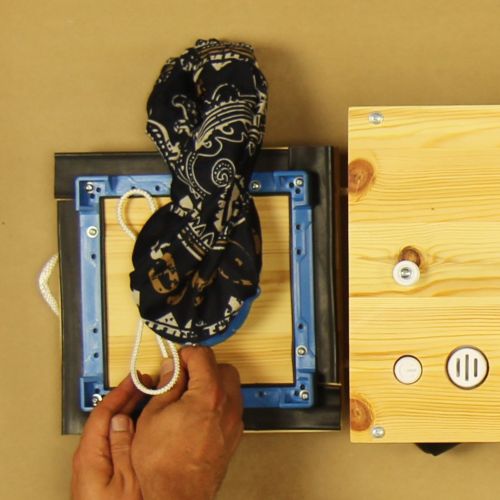
Solving these two issues might make a relevant difference in bringing this open-source vacuum cleaners to a broader audience.
Other Functional Issues (Non-essential but noticeable, depending on the user)
While these may not be deal-breakers for every DIY enthusiast, they are commonly mentioned concerns that impact usability and practicality.
🚫 No Sound Insulation: Whenever we demonstrate the Tenok to people, they are usually inspired by the concept. However, one of the first things they mention is how loud it is. Compared to commercial vacuum cleaners, Tenok produces significantly more noise. This is mainly because the wooden body does little to dampen the motor sound, unlike traditional plastic casings with additional built-in insulation.
🚫 No Cord Reel System: Unlike store-bought vacuum cleaners that neatly retract their power cords, Tenok requires you to manually wrap and store the cable. This makes cable management less convenient and can lead to tangled or messy cords.
🚫 Sharp Corners: The boxy, wooden design means Tenok has sharp edges, which increases the risk of damaging walls, furniture, and even the vacuum itself if bumped too hard. Traditional vacuums tend to have rounded edges for this reason.
🚫 Unintuitive Storage: Tenok doesn’t have a proper stand, handle, or docking solution, making it awkward to store. Most commercial vacuums are designed to be propped up neatly, whereas Tenok may require extra thought to store efficiently.
🚫 No HEPA Filter Support: Since Tenok doesn’t support HEPA filters, it’s less effective at capturing fine dust, allergens, and airborne particles. For allergy sufferers or those sensitive to dust, this makes it a less attractive option compared to modern vacuums with advanced filtration systems.
While these issues don’t take away from Tenok’s brilliant DIY concept, they highlight practical limitations that make it harder for the vacuum to become a DIY adopted, everyday solution. However, we still believe that Tenok is far more valuable than many other DIY tech projects that, while impressive, end up being one-off builds with little real-world use. Many maker projects focus on novelty over function, resulting in creations that quickly become e-waste.
Tenok, on the other hand, is a fully functional household appliance, one that challenges the disposable nature of modern consumer electronics. Even with its limitations, it proves that waste can be turned into a resource, making it a truly impactful and thought-provoking design rather than just another short-lived experiment.
These challenges made us think: How can we build on Tim’s idea while making it more practical for everyday users?
How FairVacuum is building on Tim’s work
At FairVacuum, we see tremendous potential in the concept of a universal vacuum cleaner body. We seek to improve the design and to find a viable business model. However, we’re just getting started, and we know the journey won’t be easy.
For DIY makers
We want to take Tenok’s ideas a step further by making the vacuum easier to build and improving the overall user experience. Key upgrades we aim to introduce include:
✅ Dust bag compatibility – A more practical and familiar collection system.
✅ Sound insulation – Reducing noise levels for a quieter operation.
✅ HEPA filter support – Enhancing air quality.
✅ Sound insulation – Reducing noise levels for a quieter operation.
✅ HEPA filter support – Enhancing air quality.
Beyond DIY: A Scalable Vision
Our vision goes beyond a DIY home solution. While Tenok remains a DIY-only project, our goal is to develop a design that can be mass-produced at scale while still incorporating salvaged components. Ultimately, we aim to create a universal vacuum cleaner body that is ideal for recycling centers and second-hand stores.
We envision a standardized vacuum housing that enables recyclers to quickly mount harvested parts, making repair and reuse more efficient. This approach would allow second-hand stores to offer high-quality, refurbished vacuums at fair prices—bridging the gap between sustainability and accessibility.
Follow our story - Subscribe to our newletter today!
Tim Krahmer’s Tenok proved that waste can be a resource. Now, we want to take that idea further by making a universal vacuum body that is practical, repairable, and more more widely adopted. If you believe in repairability, sustainability, and open-source design, we’d love to hear from you! Let’s work together to revolutionize the vacuum cleaner industry—one salvaged motor at a time.





